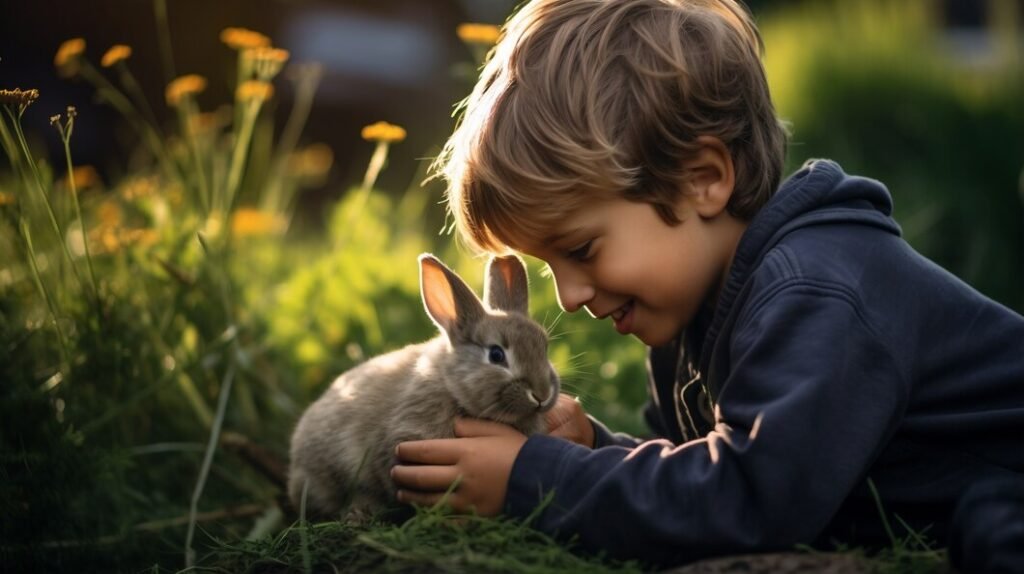The Homestead Blue Rabbit has become a popular choice among homesteaders due to its gentle nature, adaptability, and economic benefits. But what makes this rabbit so special? Let’s explore why this breed is ideal for both beginners and seasoned homesteaders.
What Is a Homestead Blue Rabbit?
A Homestead Blue Rabbit is a domestic breed known for its striking blue-gray fur and friendly disposition. This breed is often chosen by those looking to raise rabbits for meat, fur, or companionship due to its versatility and manageable size.
History and Origin of Homestead Blue Rabbit
The origin of the Homestead Blue Rabbit traces back to early European breeds known for their dense fur and resilient nature. Over time, breeders have refined their characteristics to suit homestead needs, emphasizing their docility, robust health, and high-quality fur.
Physical Characteristics of the Blue Rabbit
The Homestead Blue Rabbit is medium-sized, typically weighing between 6 to 10 pounds. Its coat features a dense, velvety blue-gray fur that is both soft and easy to maintain. This breed is known for its strong, muscular build, which makes it ideal for various homesteading purposes.
Why Choose Blue Rabbits for Homesteading?
One of the main reasons to choose Blue Rabbits for homesteading is their adaptability. They thrive in various climates and can be raised in both rural and urban settings. Moreover, their calm temperament makes them easy to handle, even for those new to rabbit care.
Caring for Your Homestead Blue Rabbit
Proper care is essential for maintaining the health and well-being of your Blue Rabbit. This involves regular grooming, providing fresh water, and ensuring their living area is clean and safe. A well-cared-for Blue Rabbit can live up to 8-12 years, making it a long-term companion.
Feeding Requirements of the Blue Rabbit
Blue Rabbits thrive on a balanced diet that includes hay, fresh vegetables, and a limited amount of pellets. Hay is particularly important as it aids in their digestion and keeps their teeth healthy. Fresh greens such as lettuce, carrots, and herbs can also be included to provide essential nutrients.
Ideal Living Conditions for Blue Rabbits
Creating the right living conditions is crucial for the well-being of Blue Rabbits. They need a spacious hutch with good ventilation, protection from harsh weather, and plenty of room to move around. Providing a secure outdoor run also allows them to enjoy fresh air and exercise.
Breeding Blue Rabbits on Your Homestead
If you’re looking to breed Blue Rabbits, it’s important to understand their breeding cycle. They reach maturity at around 5-6 months, and with proper care, a healthy doe (female rabbit) can produce up to 6 litters per year. Careful planning and management of breeding pairs can ensure a steady and healthy stock of rabbits.
Health and Common Ailments of Blue Rabbits
Like all animals, Blue Rabbits are susceptible to certain health issues, such as respiratory infections, digestive problems, and dental issues. Regular check-ups with a vet and keeping their living area clean can help prevent many common ailments. Watch for symptoms like lethargy, loss of appetite, or changes in behavior as signs that your rabbit may need medical attention.
Economic Benefits of Raising Blue Rabbits
Homesteading with Blue Rabbits can offer a range of economic benefits. Their high-quality fur can be sold to textile markets, and their meat is a sustainable protein source that is both lean and nutritious. Additionally, rabbits are known for their high reproduction rate, making them a viable source of income for small-scale farmers.
Blue Rabbits as Pets: A Family-Friendly Choice
Blue Rabbits are not only beneficial for farming but also make wonderful pets. Their gentle and affectionate nature makes them a favorite among families with children. They are easy to litter train and can even be taught basic tricks, adding to their charm as a household pet.
Sustainable Practices in Raising Blue Rabbits
Sustainability is at the core of homesteading, and Blue Rabbits fit perfectly into this philosophy. They have a small ecological footprint, require less space compared to other livestock, and produce natural fertilizer that can enrich garden soil. This makes them a great choice for those seeking a low-impact way to contribute to their food supply.
Challenges of Raising Homestead Blue Rabbits

While raising Blue Rabbits can be rewarding, it does come with challenges. Maintaining the cleanliness of their living spaces, managing breeding cycles, and ensuring they get the proper nutrition can be time-consuming. Additionally, dealing with predators and extreme weather conditions requires vigilance and planning.
Conclusion
Homestead Blue Rabbits are a versatile and valuable addition to any homestead. With their friendly nature, manageable size, and potential for economic benefits, they offer a sustainable way to enrich both your homesteading experience and lifestyle. By understanding their needs and providing proper care, you can enjoy the many rewards that come with raising these beautiful creatures.
FAQs
What makes Homestead Blue Rabbits different from other rabbit breeds?
The unique blue-gray coat and friendly temperament of Homestead Blue Rabbits make them ideal for homesteading. They are versatile and easy to care for.
How often should I feed my Blue Rabbit?
Blue Rabbits should have constant access to hay, with daily servings of fresh vegetables and a small amount of pellets to balance their diet.
Are Blue Rabbits suitable for beginners?
Yes, their calm nature and adaptability make them a great choice for those new to raising rabbits or small livestock.
What is the lifespan of a Homestead Blue Rabbit?
With proper care, these rabbits can live between 8 to 12 years, providing long-term companionship.
Can Blue Rabbits be kept indoors?
Yes, they can be kept indoors if they have a spacious and secure area to roam. However, they also benefit from time outdoors in a protected run.










